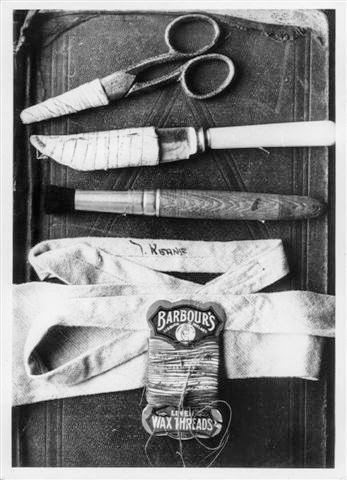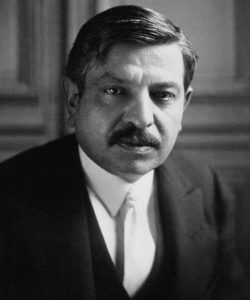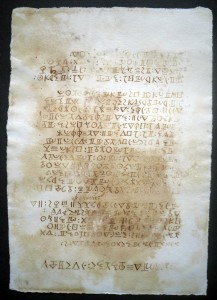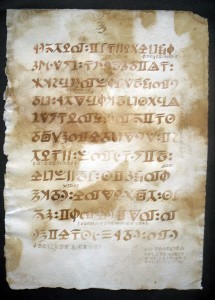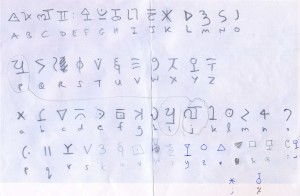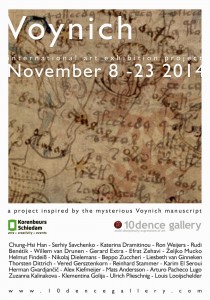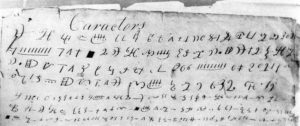Did Soviet spy Arnold Deutsch die on the SS Donbass? To work towards an answer to that question, I decided to compile my own mini-history of the SS Donbass from numerous archival sources. Here’s what I found…
SS Donbass
There have been several ships called “SS Donbass” in modern times, but we’re only interested in the first of these – the one that was sunk in November 1942. Here’s what it looked like:-
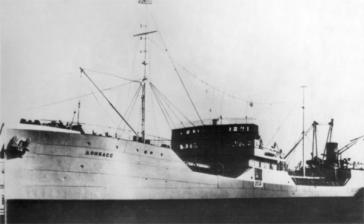
This paricular SS Donbass was built in 1935, with a gross tonnage of 7925 tons and a loading capacity of 7602 tons: a decent-sized ship. Other key statistics to satisfy passing merchant marine historians:-
* Length: 140.12m
* Width: 17.94m
* Draft: 8.45m
* Machine power: 2 x 1400 hp (I think, please correct me if this is wrong)
* Max speed: 10 knots
In 1940, the ship was then transferred across from Sovtanker Steamship Company into the main fleet.
SS Donbass in Convoy PQ-17
According to this post, in mid-1942 the Donbass travelled from Buenos Aires to New York with a large consignment of oil. Once there, it was fitted with two 65mm cannon and eight heavy machine guns to allow it to defend itself, and then sent on to Reykjavik.
En route to Russia as part of the PQ-17 convoy operation, it rescued 51 men from the US transport ship SS Daniel Morgan. It repulsed 13 air attacks and 1 submarine attack, knocking down two German He-111 bombers (04th July 1942) and one Ju-88. The rescued US sailors even helped man the nose gun.
The captain (Mikhail Ivanovich Pavlov) and senior engineer (Mefodiy Martynovich Fedorov) were awarded British medals (I’m guessing Atlantic Star Medals?)
According to the crew manifests, 28 additional Russian crew members came on board in New York: I’m told that these were from the SS Ashgabat, which had not long before sunk off the American coast (but I don’t have a reference for this).
SS Donbass in Operation FB
The Donbass was not so fortunate in Operation FB, travelling from Arkhangelsk to Reykjavik. Having passed Novaya Zemlya on the way out on 4th November 1942, it was attacked by Nazi bombers the following day, but was able to use its cannons to drive them off. However, its lucky streak ended on 7th November 1942, when it was attacked by the vastly stronger German destroyer Z-27: in rapid succession, the Donbass was hit by torpedoes, its oil caught fire and set the whole ship ablaze, the Donbass split into two huge pieces fore and aft, and the front half sank.
However, the crew kept on fighting, manning the cannon and machine guns on the ablaze aft end of the ship. But when their ammunition ran out, Captain Zielke finally ordered the crew to abandon the Donbass’s dying hulk: they were left floating in the icy seas for a while, but were than picked up by the Z-27. The coordinates were: 76° 25’N, 45° 54’E.
On 9th November 1942, the fifteen captured seamen were handed to the Coast Guard at the Northern Norwegian port of Alta, and then driven to a POW camp. In February 1943, they were transported to a concentration camp for sailors in Gdynia (Poland), where they stayed until 1945 (Zielke escaped the camp but was recaptured after a month on the run). While there, however, at least four of these fifteen died of starvation. Captain Zielke, who survived, was awarded the Order of Lenin.
The Dead
Here is the memorial plaque to the SS Donbass, listing the 33 men and women who died on it that fateful day.
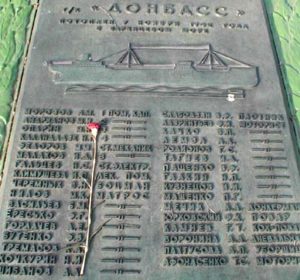
With Arnold Deutsch in mind 🙂 , I cross-referenced this list with the various other crew lists available. This is because I don’t even remotely believe that Deutsch would have been on the SS Donbass in both Convoy PQ-17 and Operation FB: hence I think we can almost certainly rule out anyone who was in both convoys. Or who was female.
Key:-
[*] = arrived at New York from Buenos Aires in July 1942
[A] = was taken on board from the Ashgabat
[F] = female crew member
— = (whoever was left)
Left column:
[*] Morozov Arseniy Maksimovich, 1st Assistant, 1894
— Andrianov, Mikhail Ivanovich, 2nd Assistant, ?
[*] Oparin Mikhail Nikolayevich, 3rd Assistant, 1913
[*] Kalandadze Nina Germanovna, 4th Assistant, 1918
[*] Fedorov Mefodiy Martynovich, Art. Mechanic, 1894
[*] Malakhov Ivan Dmitriyevich, 3rd engineer, 1915
[*] Gal’tsev Nikolay Stepanovich, Senior electrician, 1911
[F] Klimushcheva Iya Petrovna, Marine medic, ?
— Cheremnykh Vasiliy Nikolayevich, Boatswain, ?
— Nilov Mikhail Konstantinovich, Motorman Grade 1 (Sailor), 1911
[*] Vasil’yev Boris Mikhaylovich, Sailor, 1917
[*] Yeres’ko Filipp Grigor’yevich, Sailor, 1912
[*] Gorlachev Aleksandr Yegorovich, Sailor, 1915
[*] Butenko Fedor Vasil’yevich, Sailor, 1912
[*] Trimasov (Tremasov) Kuz’ma Andreyevich, Sailor, 1915
[*] Kochurkin (Kochkurin) Nikolay Ignat’yevich, Sailor, 1917
[A] Shibanov Aleksandr Alekseyevich, Sailor, [Aged 36]
Right column:
[*] Slobodzyan (Slabodzyan) Valentin Philippovich, Carpenter 1921
— Lavrent’yev Fedor Ivanovich, Motorman Grade 1, 1910
[*] Khachko Viktor Petrovich, Motorman Grade 1, 1912
[*] Lemza Aleksey Sergeyevich, Motorman Grade 1, 1914
[A] Radionov German Stepanovich, Motorman 1 Class, [Aged 28]
[*] Tagiyev Ismail Dzhanilovich, Motorman Grade 1, 1915
[A] Pashchenko Viktor Filippovich, Motorman Grade 1, [Aged 24]
[*] Galkin Nikolay Pavlovich, Motorman Grade 1, 1912
[*] Kuznetsov Ivan Ivanovich, Motorman Grade 1, 1914
[A] Mashchenko Petr Gordeyevich, Motorman 1 Class, [Aged 32]
[*] Mechik Leonid Aleksandrovich, Donkerman, 1908
[*] Yurkovskiy Fedor Konstantinovich, Cook, 1909
[*] Kamnev Grigoriy Timofeyevich, Chef, 1916
[F] Voronina Avgusta Aleksandrovna, Orderly, 1920
[F] Pakhtusova Agrippina Petrovna, Maid, ?
[A] Afonasenko Trofim Semenovich, Motorman 1 Class, [Aged 25]
Who is left?
If Arnold Deutsch died on board AND he appears under a different name in the lists of the dead, he must be one of the following four people:-
— Andrianov, Mikhail Ivanovich, 2nd Assistant, ?
— Cheremnykh Vasiliy Nikolayevich, Boatswain, ?
— Nilov Mikhail Konstantinovich, Motorman Grade 1 (Sailor), 1911
— Lavrent’yev Fedor Ivanovich, Motorman Grade 1, 1910
Make of that what you will.
